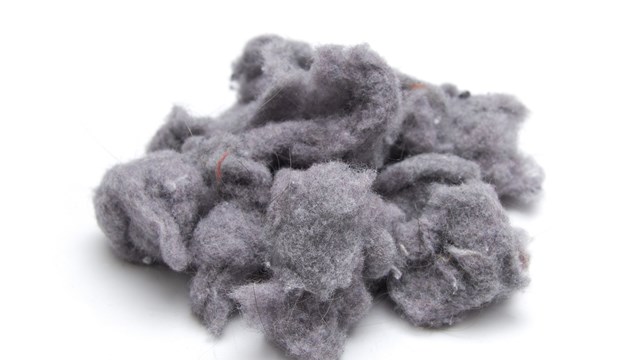For years, the hospitality industry has been fighting a chemical war against bed bugs. Now, with the growing menace of pesticide-resistant bed bugs and increasing documentation of human injury from harsh chemicals, the question to consider is, “Are we using the right tactics?” Is a chemical war really the best choice when it is proving increasingly less effective and when non-chemical, heat-based treatments—like structural pasteurization—as recommended by the Centers for Disease Control and Prevention (CDC) are available to mitigate these concerns?
Chemical pesticides—historically the first choice in killing bed bugs—are cited as the cause of illness to human occupants and pest control professionals. According to the September 23, 2011 edition of the CDC's Prevention of Morbidity and Mortality Weekly Report (volume 60, No. 37), acute bed bug pesticide-related illnesses have been reported in at least seven states, including New York, California, Florida, Michigan, Texas, Washington and North Carolina—with one fatality reported due to pesticide poisoning.
But those made ill by pesticides in the CDC report are likely just a fraction of those who are ultimately affected by exposure to these chemicals. Many may overlook minor symptoms or chalk them up to other causes, and chemical exposure is often cumulative, with an extended latency period before symptoms exhibit years—even decades—later.
Pesticide Health Hazards
By their nature, bed bug pesticides are toxic. While commonly used pyrethrins are only slightly acutely toxic, they are a sensitizer/irritant considered to be carcinogenic. Permethrin is moderately acutely toxic, possibly cancer-causing, and can cause endocrine disruption. Propoxur, which is not registered by the EPA for bed bug control but has been used illegally by some pest control companies, is highly toxic and probably cancer-causing, with reproductive effects, neurotoxicity, and the potential for kidney and liver damage.
Because traditional chemicals are increasingly ineffective against pesticide-resistant bed bugs and their eggs, some pest control companies are even pressing to use more dangerous chemicals. But this puts occupants and applicators at even greater risk for what’s likely to be only short-term gains, as bed bugs continue to adapt to commonly used pesticides.
According to the CDC report, pesticide-related illnesses have been caused after chemical treatments conducted by both individual consumers and professional pest management companies. Children are especially at-risk. They face the highest pesticide exposure risk since they tend to sit, crawl or roll on the ground, near application sites where pesticide vapors and residues may settle.
“Pesticide exposure impacts brain development and affects children's ability to learn,” cautions Warren Porter, Ph.D., a professor at the University of Wisconsin-Madison in the article, “Facing Scientific Realities, Debunking the ‘Dose Makes the Poison’ Myth.”
Growing Bed Bug Chemical Resistance
Also troubling is the CDC’s evidence that pesticide-resistant bed bugs are on the rise and have been confirmed in at least five states, including California, Florida, Kentucky, Ohio and Virginia.
“Bed bug populations and infestations are increasing in the United States and internationally,” states the CDC report. “Bed bugs have an increased prevalence of insecticide resistance, including resistance to commonly used agents such as pyrethroids.”
Evolving resistance to commonly used chemical pesticides is to be expected, since living organisms naturally adapt. “Evolution of resistance is a common outcome of use of a single insecticide, or insecticides with a common mode of action, against populations for consecutive generations,” states the University of Kentucky Department of Entomology paper titled “Insecticide Resistance in the Bed Bug: A Factor in the Pest’s Sudden Resurgence?”
The Push to Use Banned Pesticides
Because of increasingly pesticide-resistant bed bugs, a growing number of pest control operators are pushing to treat bed bugs using previously-banned pesticides. But this only increases the health risk to occupants/residents, pest control applicators, and others involved.
For instance, New Jersey’s Department of Environmental Protection fined a Newark company $860,000 in 2011 for using hazardous pesticides to fight bed bugs. An investigation found that two chemicals unapproved for indoor use were used. These chemicals can cause nausea, vomiting, headaches, dizziness, and muscle twitching.
Several states have already asked the EPA to weaken their health standards to allow pesticides previously banned for indoor use. The EPA rejected such a request from Ohio authorities, which would have allowed exterminators to use propoxur to kill bed bugs in clients’ homes. Due to concerns about nervous system damage in children, the EPA banned propoxur for home use. Since 2006, California has listed propoxur as a known cancer-causing agent.
Structural Heat as a Recognized Solution
In place of increasingly dangerous chemical use, an effective CDC-recognized bed bug eradication method known as structural heat should be considered as a viable option. The CDC noted that heat treatments, like the type administered by industry pioneer ThermaPureHeat, “effectively control bed bugs” as part of an Integrated Pest Management (IPM) program. Licensees heat single rooms or entire structures to at least the minimum 118 degree Fahrenheit (for a minimum of one hour) according to the guidelines cited by the CDC.
For rooms previously treated with chemicals, it is essential to use filtration with heat. This particular heat process uniquely filters while heating, which protects the technicians and guests from any airborne chemicals that might result during the process.
The heat penetrates deep into a structure’s cracks and crevices to kill bed bugs and their eggs where they are hiding. Pesticides, in contrast, are typically not effective on bed bug eggs, so multiple treatments are often required. While pesticides may kill the live bed bug, they often need to be applied again once the egg has developed, increasing occupants’ exposure to chemicals and chemical residue.
Since many bed bugs do not stay just on bedding, the heat treatment’s penetration into structural spaces is particularly important. The heat effectively destroys the insects and their eggs. Since heat can achieve lethal levels inside mattresses, pillows, wall voids, books and all contents of a given room or structure, the homeowner, hotel or property owner doesn't need to completely remove and replace all the furnishings, drapes, carpets or mattresses. This results in less cost, and less personal or business disruption.
The heat pest eradication treatment is proving to be a fast, discreet, non-chemical, non-toxic cure to bedbug infestations without residue, odor, or the need for replacing costly furnishings. The process uses specifically designed electric heaters to heat structural spaces to eliminate insect infestations as well as disinfect, decontaminate, and dry out buildings.
The ThermaPureHeat process, developed by Dr. Michael Linford and David Hedman, has been successfully used against insect infestations such as bed bugs and termites, and has been equally effective against mold and fungi, bacteria and viruses. It has also been used to improve indoor air quality by accelerating the off-gassing of odors and Volatile Organic Compounds (VOCs). Doctors have prescribed the process to purify and cleanse the structures for asthma patients.
Unlike fumigation, which is applied only to entire structures, the heat treatment process is highly effective for localized, area or whole structure treatments, including infestations confined to a single hotel room, condo or apartment. Unlike fumigation, no chemicals are involved, with no odor, and no move out is required if completed in a single day. While non-chemical, some pest professionals choose to use the heat treatment process and dust with a chemical desiccant.
For hotels or property owners sensitive to the social stigma of bed bugs, what's especially attractive about the heat treatment process is its speed and unobtrusiveness. Since new electric heaters fit easily on a cart, they can be discreetly brought up in an elevator and into affected rooms without disturbing guests or announcing there's a problem. Taken off the cart, the electric heaters plug into electric wall outlets, and are built for stability with an automatic safety shut off if tipped. Previously, such heat treatment was unavailable in high-rise structures because propane or hydrocarbon fuels were not allowed in them.
With the CDC’s report and other research clearly showing that the chemicals used for pest control are damaging the health of people and our environment, it is time for the hospitality industry to adopt available non-chemical, heat-based technology. Heat is not only “green,” but it also happens to be cost effective and efficacious in the war on bed bugs.
Rich Wasvary is president of Expediant Environmental Solutions serving New York, Connecticut, New Jersey, Pennsylvania, and parts of Massachusetts.







4 Comments
Leave a Comment